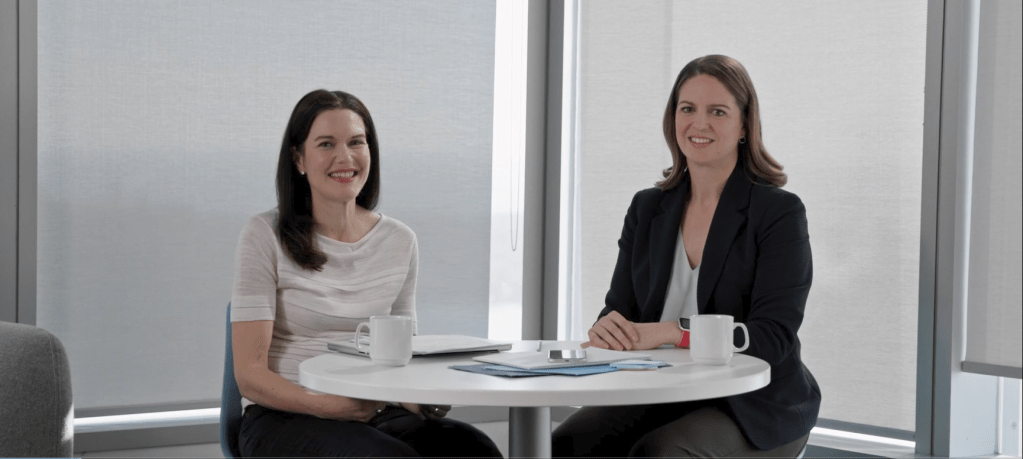Why My First $100,000 Was A Magical Milestone (And What Comes Next)

Published June 28, 2023 • 4 Min Read
When my wife and I started investing together, we kept hearing that our first goal should be to hit $100,000 – and that the sooner we got started, the better. Now we know why.
The first $100,000 is the hardest, Charlie Munger famously observed in the 1990s. But since Warren Buffet’s business partner first made his point, the satisfyingly round figure has taken on a life of its own. Ask experts and everyday investors, scroll through TikTok or Reddit, crack open a book on personal finance, and you’re liable to learn that there’s something magical about hitting six figures.
It’s more than just an impressive milestone. It could be a realistic goal for new investors – with nearly a quarter of American millennials reporting $100,000 in savings, according to a Bank of America report. That measurable dollar figure can provide the motivation we need to build wealth when goals like retirement seem too distant to conceive. But another reason some new investors set their sights on $100,000 is that that’s where many notice their investments take off, thanks to compounding.
Here’s an example. Say you start an investment that earns you 3.5 per cent interest annually – perhaps a hypothetical high-interest savings account – to which you add $1,000 every month. Starting from zero, you’d hit $100,000 in 7.3 years with no withdrawals. Not bad! But then you’d make your next $100,000 in 5.9 years. And the next hundred grand in just 4.9, and so on. The leap from $900,000 to $1,000,000 would take just 2.25 years.
| Milestone | Years |
|---|---|
| $100,000 | 7.3 |
| $200,000 | 5.9 |
| $300,000 | 4.9 |
| $400,000 | 4.2 |
| $500,000 | 3.7 |
| $600,000 | 3.3 |
| $700,000 | 2.9 |
| $800,000 | 2.7 |
| $900,000 | 2.4 |
| $1,000,000 | 2.25 |
This works for other investment types, as well. If you invest in mutual funds, exchange-traded funds (ETFs) or dividend-paying individual stocks, your holdings can compound when you reinvest those earnings.
Looking back, it’s hard not to wish I had started investing earlier, like my wife did. I opened a portfolio when I was around 30 years old. Had I started investing at 20, I could have potentially hit my milestones earlier and spared 30-year-old me the challenging work of catching up. Still, I feel nothing short of fortunate. Years after my wife and I got started, we have passed the $100,000 mark.
The question is: what happens next?
Investing after $100,000
What we do next will depend on our individual circumstances, but I’ve learned that there are some basic truths we can consider once we’ve amassed our first $100,000.
For one, you may also notice that fees associated with some holdings, like mutual funds or exchange-traded funds (ETFs), are more noticeable than when you started. I admit: I tended to uncritically gloss over relatively high fees in my early investing days. The fees rarely exceeded the cost of a single night out. But now, even if the management fees across your holdings average a modest one-per-cent annually, that means you have to be comfortable with paying $1,000 on a $100,000 investment. Now’s a good time to decide if an investment’s potential is worth the costs it incurs, especially if you’re looking long-term.
A lot may have changed in the years since you started investing. For example, we purchased a property and welcomed a child into our family, prompting us to reexamine our rate of investment, timeline and investment types (hello, education fund). For you, that could mean a new rate of pay, an unexpected windfall or expense, a change in health, or a lifestyle update. Whatever’s different, you can take steps to ensure your risk profile, profit expectations and goals shift accordingly.
Speaking of goals: $100,000 is a great number to shoot for, but you may consider defining your investing endgame in more concrete terms – that is, beyond a dollar amount. Again, it’s something I wish I had done sooner. If you haven’t already, ask yourself: Are you investing for retirement? A property? Something more near-term? Adding specificity to your goals can help motivate you to keep going and provide some food for thought the next time you face an emotional buy or sell decision.
Of course, no judgment if you simply decide to start working toward your next $100,000. Good luck.
+ Disclaimers
Financial planning services and investment advice are provided by Royal Mutual Funds Inc. (RMFI). RMFI, RBC Global Asset Management Inc., Royal Bank of Canada, Royal Trust Corporation of Canada and The Royal Trust Company are separate corporate entities which are affiliated. RMFI is licensed as a financial services firm in the province of Quebec.
This article is intended as general information only and is not to be relied upon as constituting legal, financial or other professional advice. A professional advisor should be consulted regarding your specific situation. Information presented is believed to be factual and up-to-date but we do not guarantee its accuracy and it should not be regarded as a complete analysis of the subjects discussed. All expressions of opinion reflect the judgment of the authors as of the date of publication and are subject to change. No endorsement of any third parties or their advice, opinions, information, products or services is expressly given or implied by Royal Bank of Canada or any of its affiliates.
Share This Article





